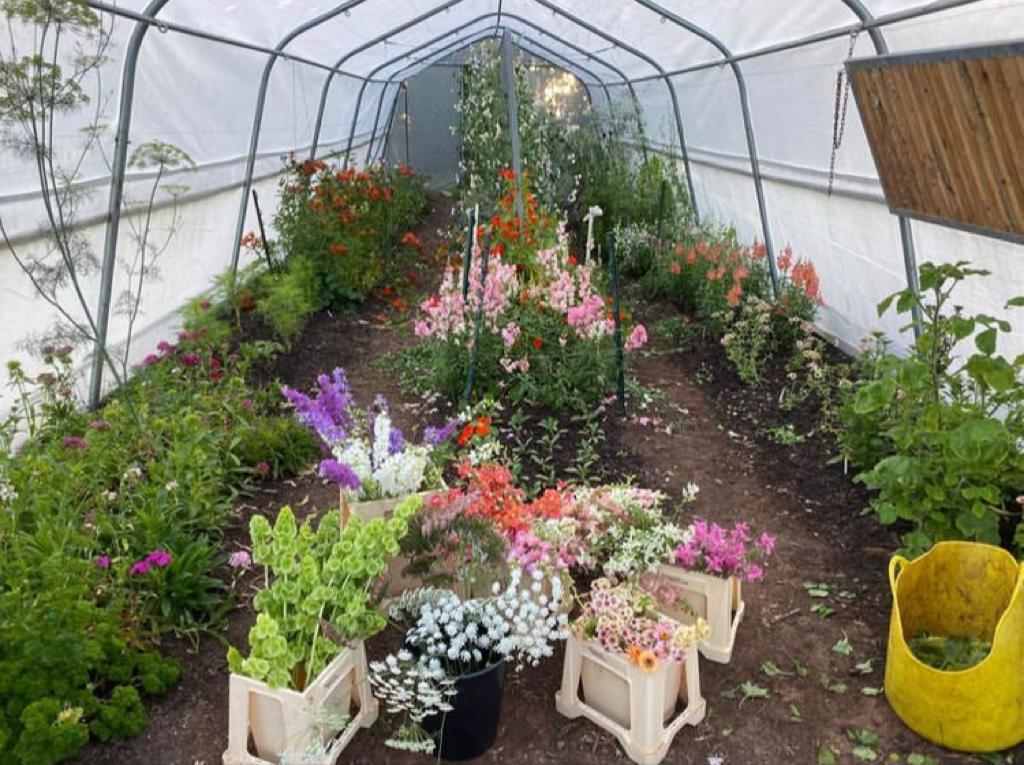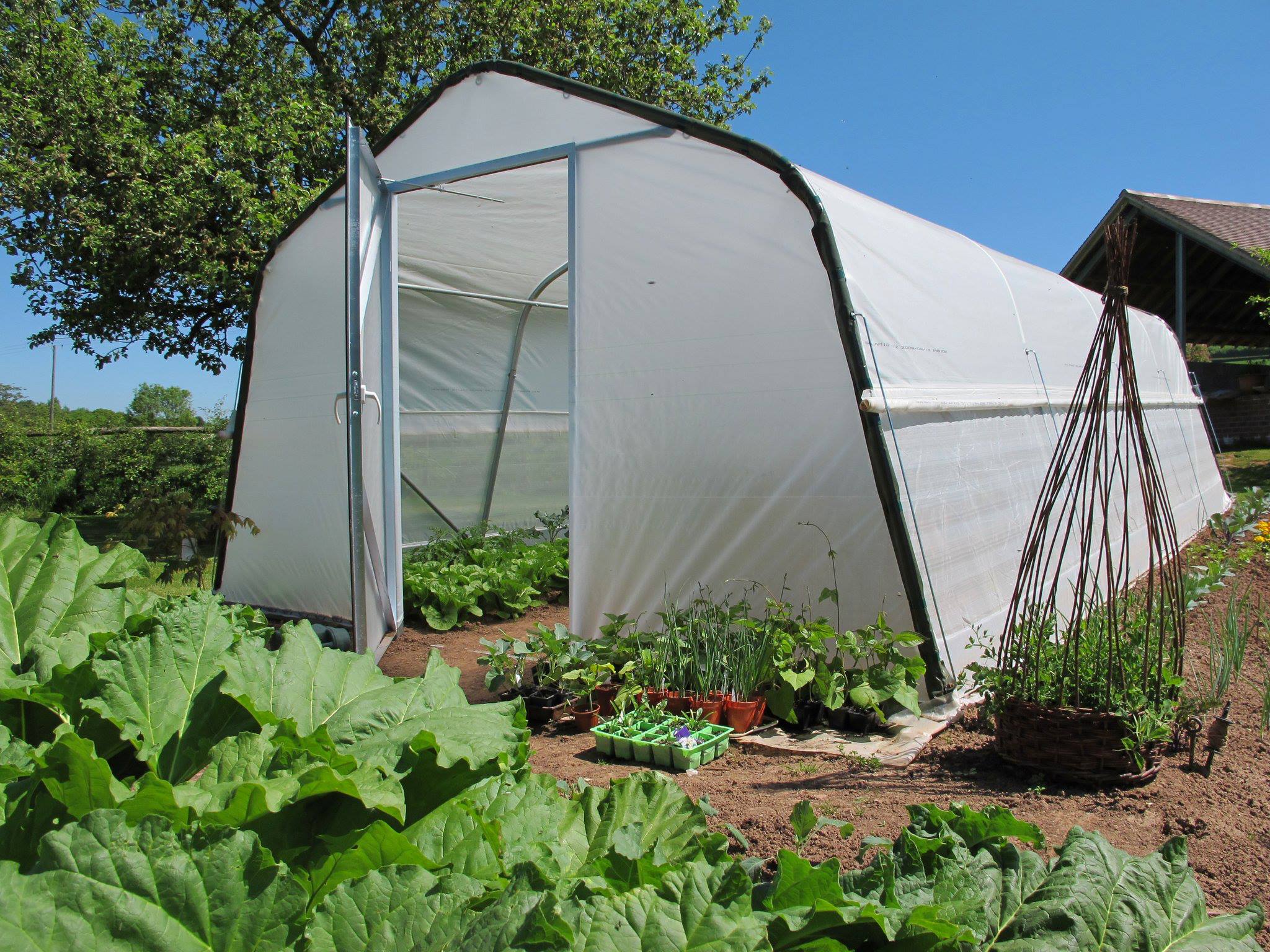Growing a cut flower garden can be extremely rewarding and is a fun way to do something different with your polytunnel growing space, even if you only dedicate a small section of your garden tunnel to flowers. Growing your own flowers can provide your home with a splash of colour and makes flower-giving on birthdays or other special occasions much more personal. It can also save you a lot of money, and it’s an environmentally sustainable way to create a bouquet.
Planning your cut flower garden layout
You should plan to have your cut flower garden in a spot in your garden tunnel and ensure it has good light exposure, as flowers need at least six hours of sun per day. Your flowers will need to be in rich soil and if you don’t have an irrigation system, your hose should be able to reach them so they can be easily watered. The easiest way to prepare your soil for growing a cut flower garden is by adding organic matter to it, such as compost.
It’s important to think about access and how easy it will be to cut your flowers’ stems- you want to be working in comfort. Cutting your flowers will be your primary maintenance task. This is because your flowers won’t continue to bloom otherwise! It is vitally important to keep cutting your flowers.
What flowers to plant in your polytunnel cut garden
There are two different types of flowers, perennials (which return year after year), and annuals (which grow, flower, and die in one season). It’s best to plant a mix of the two, as perennials only produce flowers for a short period, whereas many annuals are cut and come again flowers, continuing to re-bloom after being snipped.
Flowers grow best when sowed in the spring after the last frost, however, if you want to sow some seeds now, there are certain hardy flowers that are suited to growing in colder weather. Your Haygrove Polytunnel will also provide the protection and warmth needed for a successful harvest. Additionally, you could purchase small heated propagators to ensure your plants have enough warmth.

Growing Perennials
Perennials can be grown from seed, but they probably won’t flower in the first year, meaning you may want to buy your plant from a nursery or garden center. Your perennials will often disappear up top in the winter, but don’t panic their roots are still under the soil and they will re-appear the following year with the sunshine!
Perennials need lots of room as they tend to increase in size every year. For this reason, you may wish to grow them outside of your polytunnel, but if you do choose to grow them from seeds, germination can be started inside your tunnel on your potting table.
Growing annuals
You will need:
- seed trays and pots
- rich soil – you can make your own from a mix of compost with garden soil
- labels and a permanent marker pen
You should follow the instructions on the seed packet, but only plant about 10 seeds or you will end up with an excessive amount of plants. You can save the rest of the seeds for replanting when any of your plants stop blooming. Make sure to use clean pots and trays or otherwise, the old disease could spread to your new plants. Once the seeds have germinated and two true leaves appear, you should place them in your raised polytunnel beds. be careful to not disturb the roots when you transfer them, particularly when handling hardy annuals.
Winter sowing
If you can’t wait until spring and want to start growing as soon as possible, you can use this growing method which essentially creates a mini greenhouse environment for your plants.
Making a winter sowing container is very straightforward. You will just need some old plastic fizzy pop bottles and tape.
- Cut the bottle around the middle, leaving a small section to act as a hinge.
- Poke holes through the bottom of the bottle so that it can drain.
- Fill the bottom half with your soil and compost mix.
- Sow your seeds using the packet instructions.
- Close the bottle, sealing it with duct tape, and ensure you leave the cap off.
- Use a pen to specify the flower name and variety.
3 annual seeds to sow in winter
Sweet pea
Sweet peas come in a wide array of colours, making them popular cut flowers. They are hard annuals and can flower for many months if well-tended. They are climbers and can grow quite tall, meaning they’ll need support.

Snapdragon
Snapdragons are perennials that are often grown as annuals. They produce brightly coloured flowers in almost every shade apart from blue. These are fail-proof plants for winter sowing.

Cornflower
Best known for their beautiful blue blooms, these annuals also come in pink, white, red lavender, and maroon. They’re great for attracting pollinators into your garden.

tips for a successful cut flower garden
- To ensure the longevity of the flower in the vase, cut it as soon as it starts to bloom.
- Cut at the bottom of the stem at a 45-degree angle.
- Once cut, put the flower immediately into fresh water
- Recut stems every few days to make sure they don’t seal up.
Remember garden tunnels dont just have to be for vegetables and other food sources. Planting flowers can be very successful in a polytunnel so you may as well make the most of the space you have as well as an added bonus of having lots of beautiful offcuts of the flowers you have grown.

